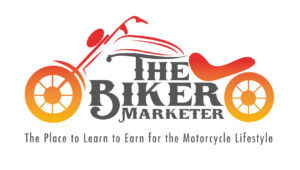Keyword Research and Selection
Understanding Your Audience
One of the first things I always do when thinking about SEO is get inside the heads of my audience. What do they want? What phrases are they using when searching for biker gear or information? Tools like Google Keyword Planner and Ubersuggest have been lifesavers for me. They give me insights on what terms are actually getting traffic. You want to be ahead of the game!
It’s like being in a conversation. If I want to talk to my buddies about a new helmet, I might say “best helmets for bikers” instead of something fancy like “motorcycle headgear.” So, use plain language and think like your readers—don’t over-complicate it.
Also, staying relevant is key! Trends in the biking community can change faster than the weather. Use social listening tools to see what’s trending and incorporate those keywords into your content. Trust me, it’ll keep your blog and store fresh.
On-Page SEO Strategies
Optimize Your Content
Alright, so you’ve got your keywords; now it’s time to sprinkle them across your website like confetti at a biker rally! Make sure they fit naturally into your titles, headers, and throughout your articles. No one likes reading a piece that sounds forced or awkward.
Plus, don’t forget about meta descriptions! Think of it as your blog’s first impression. These little snippets matter a ton for click-through rates. Write compelling descriptions that entice people to click on your blog or store, but don’t forget to include your keywords too.
Lastly, images play a huge part in on-page SEO. Add alt text to your images that describe them while incorporating relevant keywords. This not only improves accessibility but also helps with your search rankings. It’s all about that subtle balance!
Quality Content Creation
Engaging and Relevant Articles
Creating killer content is where the magic happens. Personally, I’ve found that storytelling works wonders. Sharing personal anecdotes, experiences, or even the latest biking adventure can create a connection with your audience. It transforms boring facts into relatable and engaging narratives.
Don’t shy away from including how-to guides or product reviews. They’re a great way to establish authority in the biking community and keep readers coming back. Readers appreciate valuable information, especially when it comes to making purchases!
Also, regularly updating existing content can do wonders for your SEO. I often revisit old posts to refresh the information and optimize them with new keywords. It’s a simple way to keep everything relevant without having to create new content from scratch.
Link Building Techniques
Building Relationships
Link building isn’t just about search rankings; it’s about relationships with other bikers and businesses! Collaborate with fellow bloggers or local shops for guest posts or backlinks. This can create a symbiotic relationship that benefits everyone involved.

Additionally, consider engaging in community forums or social media groups dedicated to biking. Sharing your knowledge and linking back to your blog can position you as a go-to expert. Just remember, it’s about value—don’t just spam links and run; be part of the convo!
Lastly, I’ve had success by participating in events and local meet-ups, both online and offline. Networking with influencers in the biking world can open up opportunities for high-quality backlinks that can significantly boost your domain authority.
Tracking Performance and Adjustments
Analytics Tools That Help
Once your strategy is in place, it’s time to see how things are performing. Google Analytics is my best friend for tracking traffic to my blog and store. It gives insights into how visitors are finding you, what they’re interested in, and where they’re dropping off. Always keep an eye on those analytics!
Another tool I swear by is Google Search Console. It helps to monitor your site’s traffic and performance, as well as identify any issues that may be dragging you down. Catching a potential problem early can save you lots of headaches down the line.
Regularly revisiting your SEO strategy based on this data is crucial. Marketing is ever-evolving, and what worked last month might not cut it this month. Be flexible and willing to pivot when need be to stay ahead of the game!
FAQ
1. What is the most important aspect of SEO for biker blogs?
The most important aspect is definitely keyword research. Understanding your audience and the terms they use will help you create content that attracts the right visitors.
2. How often should I update my blog for SEO purposes?
I recommend updating your blog regularly, at least once a month. Refreshing old posts and adding new content keeps your site relevant and engaging for readers.
3. What are some easy ways to build backlinks?
Collaborate with other bloggers, engage in online biking forums, and participate in related events to network. These relationships often lead to valuable backlinks.
4. How do I know if my SEO strategy is working?
Use analytics tools like Google Analytics or Google Search Console to track your traffic and see where visitors are coming from. This data will show if your SEO efforts are effective.
5. Can images help with SEO?
Absolutely! Images are not only great for user experience but also help with SEO. Just remember to use alt text with relevant keywords to boost your visibility in search results.


